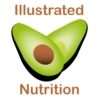How to Read Nutrition Labels: What Do You Really Know About Your Food?

If you're anything like me, then reading nutrition labels can be a major snooze-fest. You might know half the words on the label but it's confusing and not always clear what they mean. I've been trying to read them more lately because I want to make smarter food choices for my health and well-being, but let's face it: they are complicated! In this blog post, we will break down everything you need to know about how to read a nutrition label so that you can buy healthier foods without feeling overwhelmed by the process.
Serving Size for Smarties
The first thing you'll want to look at on a nutrition label is the serving size. This tells you how much of the food is considered one serving. Sometimes, the serving size will be smaller than what you would normally eat in one sitting, so it's important to pay attention to this information. For example, if you're used to eating an entire sleeve of Oreos, then the serving size that suggests 3 cookies will require some mental math. #nojudgement
Calories Count
The second thing you'll want to look at on a nutrition label is the calorie count. People can talk all day about their macros and carb counts, but at the end of the day, it really is calories in and calories out. You're aiming for the lowest calorie count with the highest satiety (a way of saying this food will actually fill your belly). This is a way a lot of marketed diet foods trick you because the calorie count is low but the food leaves your stomach empty. Pro-tip, foods high in water (think: fruits and vegetables) keep you fuller for the lowest calorie cost.
Sneaky Sugars
The third thing you'll want to look at on a nutrition label is the sugar. Now this one is tricky because most people assume that naturally occurring sugars are fine, but natural or not, they still affect your blood sugar levels and can cause an insulin spike. I try not to get too hung up on this one, but the American Heart Association recommends an added-sugar limit of no more than 100 calories per day, or about 24 grams. So if there's more than 5 grams of added sugar, consider putting it back on the shelf.
Counting Carbs?
The fourth thing you'll want to look at on a nutrition label is the carbohydrate count. This one is important if you're following a low-carb diet or have diabetes because it can help you stay within your carb limits for the day. And remember, my doctor says when counting carbs, fresh fruits and vegetables don't count at all!
Queens Eat Protein
The fifth thing you'll want to look at on a nutrition label is the protein content. Protein is a key ingredient for keeping your body strong and satiated. If you're trying to lose weight, aim for a higher protein content because it will help you feel fuller longer.
Fiberlicious
The sixth thing you'll want to look at on a nutrition label is the dietary fiber content. Fiber helps keep your digestion regular and can also help reduce cholesterol levels. Mayo Clinic recommends at least 25 grams of fiber a day (often utilizing dietary supplements like this one.) More and more frequently today, fiber is taken out of packaged food, but your body NEEDS it. Plus, when combined with water, fiber also helps fill your belly. Go get 'em, fiber.
Checkin’ it Twice
And lastly at number seven, the ingredients list: This is probably the most important thing to look at on a nutrition label. Ingredients are listed in order of quantity, so if you see an ingredient you don't want to eat (high fructose corn syrup, anyone?) then put it back on the shelf! Does it have more than two or three words you can't pronounce? Put it back on the shelf! Is the list of ingredients longer than your custody agreement? Put it back on the shelf! Ingredients lists should be simple if they're healthy.
You’re all Set!
Hope this helps you on your nutritional journey! Here, you'll always find the latest and greatest in food trends, product reviews, and recipes to help you on your way!
And remember, always consult with your doctor or nutritionist before taking our word for it. We are not doctors, just smart and sassy consumers helping to spread the word.
